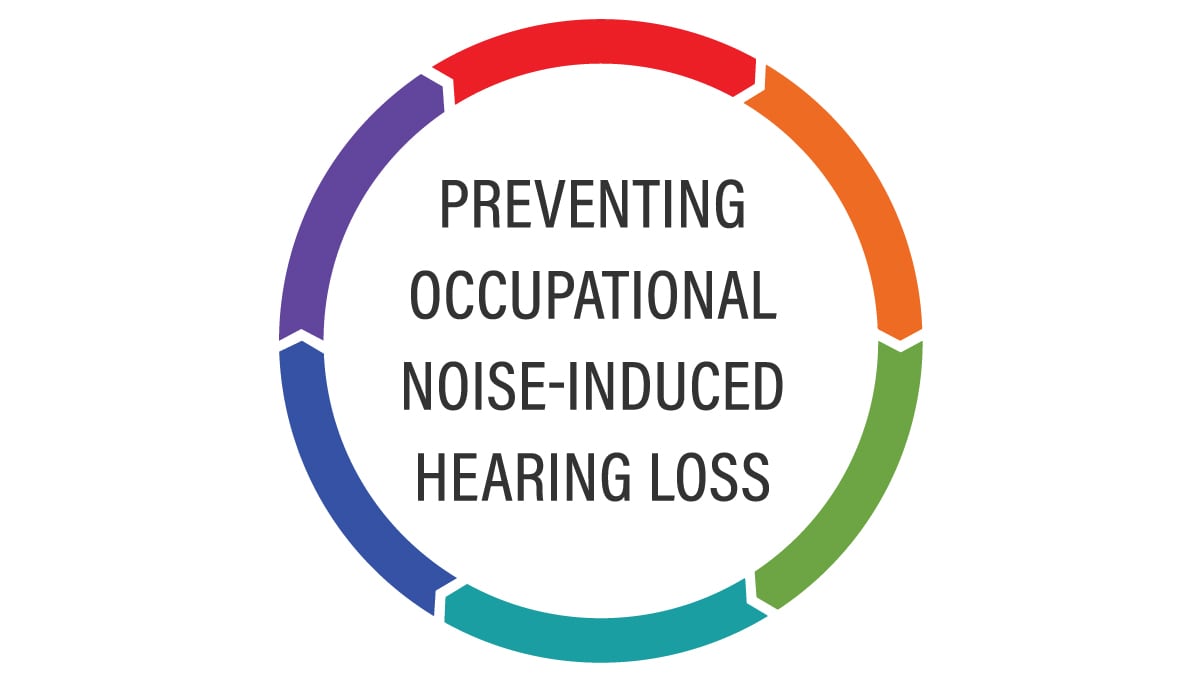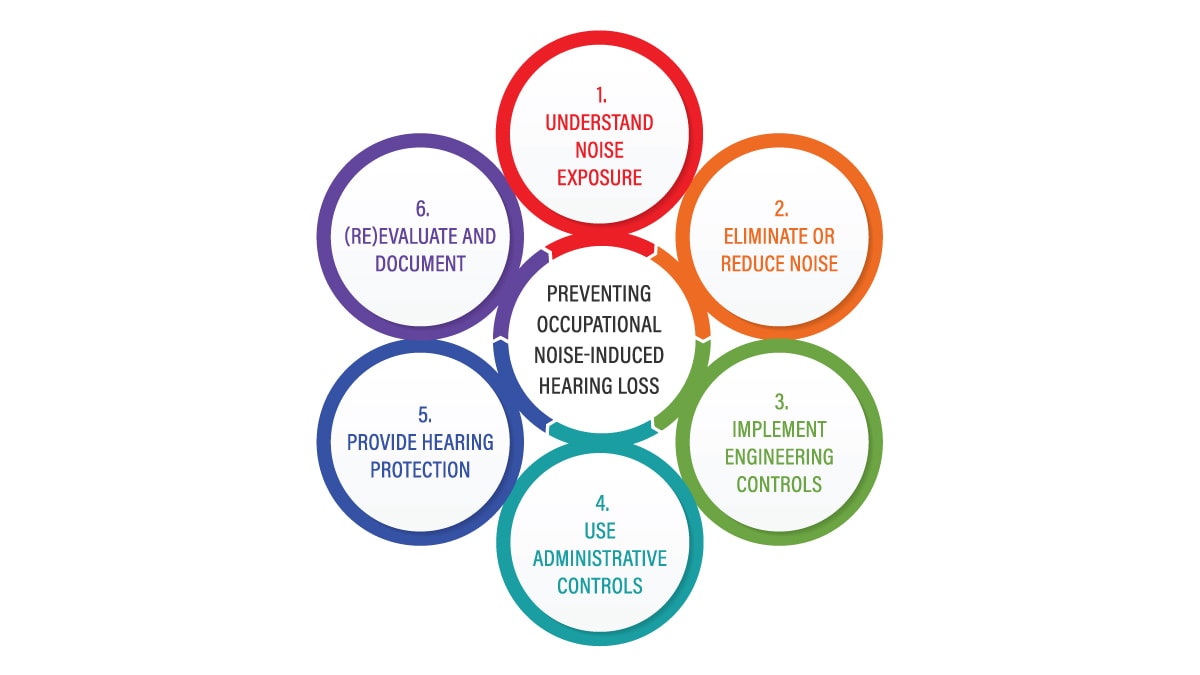At a glance
Noise is part of everyday life, but noise-induced hearing loss is nearly always preventable. This page provides a guide to help employers and safety professionals protect workers from noise-induced hearing loss. The guide walks through the basics of creating a safer, quieter workplace.

Benefits to reducing workplace noise
Repeated exposures to sounds that are 85 A-weighted decibels (dBA) or higher can cause permanent hearing loss and are associated with other problems including
- Ringing in the ears (tinnitus)
- High blood pressure (hypertension)
- Cardiovascular disease
High noise levels can also contribute to serious workplace accidents and injuries. Noise can reduce workers' awareness of what is happening around them, including signals, alarms, and verbal warnings.
Reducing workplace noise below 85 dBA is the best way to prevent occupational hearing loss and other effects from hazardous noise.
Additional benefits of reducing worker noise exposure include:
- Less stress and fatigue
- Increased productivity and better morale
- Improved relations with management
- Lower workers' compensation costs
How to prevent occupational noise-induced hearing loss

This guide will walk employers and safety professionals step by step through the basics of creating a safer, quieter workplace and protecting workers from noise-induced hearing loss. The guide includes:
- The basics of defining and assessing noise
- Minimizing noise exposure in the workplace through controls methods
- How to monitor workers for potential hearing loss
- Best practices for hearing loss prevention programs
- How to evaluate success and identify areas for improvements
Until you reduce workplace noise levels to under 85 dBA, workers should be protected by establishing an effective hearing loss prevention program (HLPP).
This guide follows the structure of a HLPP, while incorporating the best practices such as the hierarchy of controls. This guide aims to protect workers as much as possible while saving companies time and money through easy-to-implement solutions.
Learn more about each step
Find information about each step of the guide on the following pages:
- Understand noise exposure
- Eliminate or reduce noise
- Implement engineering controls
- Employ administrative controls
- Provide hearing protection
- (Re)Evaluate and document
More detailed information in also available in the NIOSH Practical Guide for Preventing Occupational Hearing Loss.
